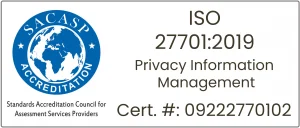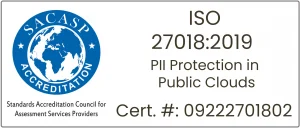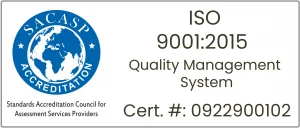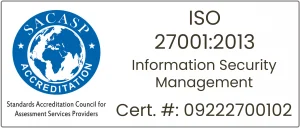© 2025 Macro Global. All Rights Reserved.
The original Cross Border Payment Regulation, CBRP1 (924/2009) is a European Union (EU) regulation that took effect in September 2009. It established a level playing field for charges on cross-border payments, among other things. Charges on cross-border payments in Euro had to be the same as charges on national payments of the same value.
The Cross-Border Payments Regulation requires the banks and other financial institutions to provide customers with greater transparency on international money transfer charges for certain card transactions conducted within the European Economic Area (EEA). When a cardholder uses the card to achieve certain transactions involving an exchange of currency in a non-euro EEA currency, the bank is required to send the cardholder a message.
Regulation (EU) 2019/518 (Amending Regulation) amends the CBPR (Cross Border Payments Regulation) by extending the fairness of charges principle to any non-euro currency of an EU member state and introducing new transparency requirements on currency conversion charges. CBPR is in effect in the United Kingdom until December 31, 2020.
UK (United Kingdom) CBPR Regime
The UK regime applies to any “national payment” or “cross-border payment” in sterling or any EU currency that involves a currency conversion. A “national payment” is made entirely within the United Kingdom, meaning that both the payer’s and the payee’s payment service providers are in the United Kingdom.
A “cross-border payment” is one made between the UK and the EEA in which the payer’s payment service provider is in the UK and the payee’s payment service provider is in the EEA, or where the payee’s payment service provider is in the EEA and the payee’s payment service provider is in the UK.
Introduction of CBPR2
CBPR1 significantly reduced charges for intra-Eurozone cross-border payments in Euro. Fees for cross-border Euro payments from non-Eurozone EEA states, on the other hand, remain high. According to the recitals, currency conversion charges continue to be a significant component of these charges.
CBPR2 imposes transparency requirements to raise consumer awareness of the fees associated with Euro cross-border payments. The Payment Services Regulations 2017 (PSRs) already require payers to disclose charges and exchange rates. However, according to recital 6 of the CBPR2, “those information requirements have not achieved sufficient transparency.” CBPR2 thus goes further, significantly altering CBPR1 with some new transparency standards.
Regulatory Requirements for CBPR2
The CBPR2 regulations are intended to increase the transparency of currency conversion costs throughout the payments industry. Bank and other e-money institutions, PSPs (Payment Service Providers) must publish the FX markups on relevant transaction currencies on a public website. They should send an electronic message to their cardholders outlining the total FX mark-ups on qualifying transactions starting April 19, 2021. FX mark-ups must be calculated as a percentage (%) of total cross-border card fees with the daily ECB reference exchange rate.
Transparency requirements in CBRP2
The new Regulation establishes new transparency rules for currency conversion fees for card-based transactions and credit transfers.
Transactions involving credit cards
When providing currency conversion services through an ATM or at a point of sale, the currency conversion charge must be expressed as a percentage mark-up over the most recently accessed euro foreign exchange rates issued by the European Central Bank (ECB). This disclosure must be made before the transaction is initiated.
CBPR2 requires Payment Service Providers (PSP) that provide currency conversion via card-based transactions to explicitly disclose their FX profit margins by requiring the disclosure of the mark-up against a publicly referenced rate. Furthermore, the payer’s PSP is required to disclose the mark-up to customers via electronic message (i.e., text or email) following the transaction. It establishes greater transparency which boosts competition and reduces costs. It is likely to cause consumers to reconsider their payment methods to get a competitive exchange rate.
Credit Transfers Online
CBPR2 also fosters a disclosure requirement for any credit transfers made online through PSP websites or mobile applications. According to the new regulation, the estimated charges for currency conversion services applicable to the credit transfer must be disclosed.
While not as onerous as disclosing the percentage markup, it goes beyond the PSRs’ requirement to simply disclose the “exchange rate used” and the “amount of the payment transaction after an exchange of currency.” Now the Payment Service Providers are required to disclose the exact amount of the currency conversion markup. The disclosure requirement only applies if the charges are “applicable to the credit transfer.” If a money transfer institution offers multi-currency accounts could first perform the FX conversion and corresponding transfer between the sold and purchased currencies.
Following this conversion, it would only carry out the subsequent credit transfer to the beneficiary. Currency conversion fees would not be “applicable to the credit transfer” in this case, and thus the disclosure is not required.
After receiving and authorising a payment order from a Point of Sale or a cash withdrawal from an ATM for a payment denominated in another EU currency, card issuers must send an electronic message with the percentage mark-up without undue delay as of April 19, 2021. This information must be made available for free and through a widely available and easily accessible channel.
Nonetheless, the provider must provide the user with the option to opt-out of receiving these electronic messages.
Impacts of CBPR2 on Individuals, Businesses, Banks, and other Payment Service Providers
Broadly speaking, the application of the equality of charges principle effectively means that individuals and businesses in non-eurozone countries will have the same conditions as residents of the eurozone when making cross-border payments in the euro. Furthermore, the new rules aim to protect consumers from excessive charges and to increase transparency requirements for currency exchange rates and transfer fees used in cross-border payments.
The Regulation’s transparency principle will enable customers to compare various currency conversion charges and pick the best currency exchange option for their benefit. Furthermore, as customers become more aware of these fees, banks will be forced to rethink their pricing models, with obvious downward pressures, contributing to better and more cost-effective access to financial services.
However, financial institutions may face difficulties in implementing these rules.
1. Unclear terms definition
The new provisions in CBPR2 on transparency rules for currency conversion charges are likely to spark heated debate over their interpretation. Misinterpretations that could result in penalties for noncompliance with CBR2 rules could thus be avoided.Customers will benefit from clarification of such definitions as well so that the absence of accuracy of the charges embedded in the exchange rate does not result in those fees being excluded from additional fees shown to them.The terms “point of sale,” “ATM,” and “card-based transactions,” which are critical for determining the scope of application of the new obligations, are not defined in the regulation.
If the meaning of those terms appears obvious, as they are commonly used in the industry, industry players know that the devil is always in the details in payments, and this lack of definition will lead to divergent interpretations and, potentially, different supervisory practises across the EEA.
Some of these concepts are defined in other EU laws, which should help in some ways; for example, “card-based (payment) transactions” and “point of sale” are defined in Regulation 2015/751 on interchange fees for card-based payment transactions (the MIF Regulation). However, without a final declaration that they should be used in this case, one cannot rely on them with certainty in the lack of a comprehensive reference to those definitions in CBPR2.
2. High Implementation costs & technical costs
Transparency requirements for transaction payments may result in high implementation costs and significant technical challenges for PSPs. Financial institutions will need to restructure their IT systems and reform their contractual terms to provide the information required for cross-border charges to all involved parties. As a result, they will need to create a new, technology-enabled framework that ensures compliance most cost-effectively.
- Furthermore, as financial institutions for cross-border payments become more digitalised, financial institutions will need to adapt to the new digital era’s developments and enhance their web banking services, such as client advisory tools, online banking, and mobile applications.
Overall, the lack of clarity is regrettably low, particularly given that the new Regulation will have a significant impact on the industry and may necessitate significant technical improvements to infrastructures.
Call our experts at +44 204 574 2433 to have a discussion further on CBPR2 and find out how we can help you in setting up a better governance, risk and compliance framework?











